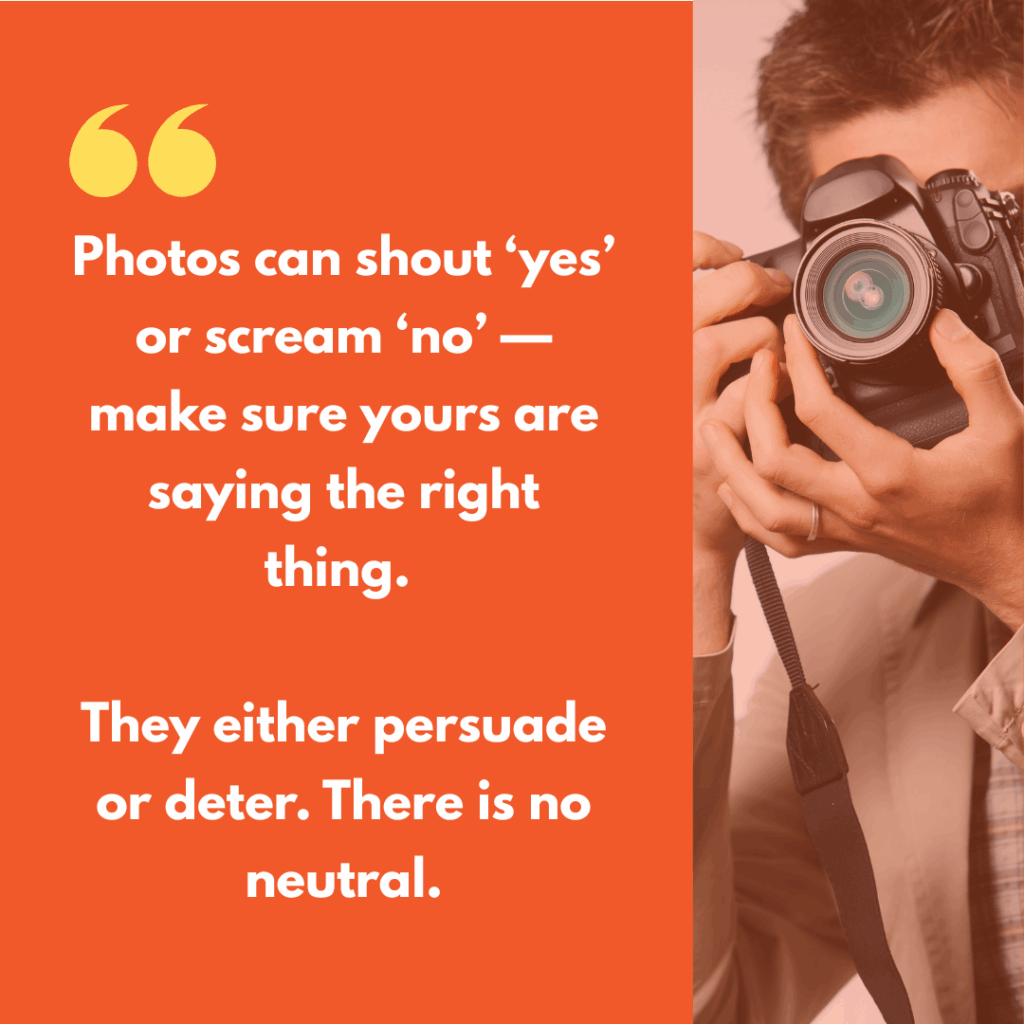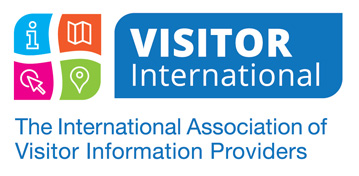Why Great Photos Matter in Visitor Brochures
Tips to help you avoid common mistakes and capture the images that sell your experience best
First impressions happen in seconds — and they are almost always visual. Research shows the human brain can recognise images in as little as 13 milliseconds. In marketing, images are essential to communication. Before a visitor reads a word of your brochure, they respond instinctively to the photographs.
Strong images capture attention, stir emotions, and help people imagine themselves enjoying your experience. A brochure with poor or generic images will struggle to hold interest, while one with compelling, authentic photography will connect, inspire, and convert.

Real Photos Over Generic: Help Visitors Connect
Audiences today are highly attuned to authenticity. They can spot stock photographs instantly — and when you are promoting your product or service, authenticity is non-negotiable. Using library images risks misleading visitors and damaging trust. People want to see the real experience you offer, not a generic image that could belong anywhere.
Photographs captured on-site — showing real spaces, real people, and real moments — have far greater impact. Whether you are showcasing landscapes, stylish interiors, or vibrant experiences and events, it is genuine images that visitors believe, trust, and act upon.
Why Professional Photography Pays
Whenever possible, invest in professional photography. A skilled photographer brings more than equipment — they bring an eye for composition, light, emotion, and detail. They know how to capture the images that sell your experience best.
Professional shoots also deliver a library of consistent, high-quality images that can be used not just in brochures, but also across websites, social media, advertising, and campaigns. While the cost may seem high at first, the return in increased bookings, visibility, and brand credibility makes it one of the most valuable marketing investments you can make.

Poor Photography Unsells Your Experience
Photography is never neutral. It either builds your reputation and enhances appeal, or it undermines it. Poor quality images — whether blurry, dark, awkwardly staged, or outdated — actively unsell your offer.
A dim interior, an empty room, a stiff smile, an overly staged photo, or a lifeless activity shot can make even the best experience look uninviting. In a competitive world, visitors can quickly move on if your photos do not inspire confidence, interest, and excitement.
If You Must Take Photos Yourself
If professional photography is not possible, it is vital to follow professional standards as closely as you can:
- Use natural light wherever possible.
- Indoors, work with window light or invest in simple softbox lights.
- Keep the camera steady — use a tripod if available.
- Compose carefully — avoid cluttered backgrounds and distracting elements.
- Focus on natural expressions and genuine interactions, not stiff poses.
Poorly taken images are worse than no images at all. If in doubt, wait until you can get professional support.
Organising a Successful Photo Shoot
When planning a half-day or full-day shoot, think carefully about your models. Choose people who feel comfortable in front of a camera and who naturally convey energy, enjoyment, and happiness. The right expressions bring your experience to life and make it easy for visitors to imagine themselves there.
Use different sets of people for different series of shots — such as couples, families, and groups of friends — to create a rich variety of imagery for different audiences.
Keep continuity within each photo set. If you are shooting a couple engaged in an activity, keep that same couple in all related images. Mixing individuals across shots makes it obvious the photos were staged, especially when used together in a brochure or gallery.
Be mindful that set-ups take time. Standing around often results in tired faces and lost smiles, especially if the same models are used throughout the day. Rotate models where possible to keep energy fresh. If children are involved, plan carefully and limit their time on set — fatigue shows quickly in photographs.
Dressing for a Successful Shoot

Ensure models wear clothing that suits the setting: casual for outdoor activities, smart casual for food and drink, and more formal for luxury venues.
- Solid colours generally photograph better than busy patterns.
- Soft blues, greens, and neutrals work in most settings.
- Bright colours can be effective in landscapes where people need to stand out.
- Avoid bold logos, statement clothing, or high-fashion pieces that may date quickly.
- Black and white clothing are best avoided: black loses detail in shadows, while white can dominate in bright light.
Dress for the season you want to promote. For year-round appeal, plan shots that hint at different seasons — jumpers and scarves for autumn/winter, lighter layers for spring/summer.
Think About Props and Accessories
Small details can make a big difference. Props help set the scene, add realism, and subtly guide how your experience is perceived. Before your shoot, take time to plan what each image should convey — then choose accessories that support that message. Advance preparation is key: thinking ahead about props, backdrops, and extras means you won’t be caught out on the day.

Consider what people might naturally carry: tote bags, sun hats, backpacks, guidebooks, shopping bags, cameras, or smartphones. These items make your models look like real visitors, not just people posed for a picture.
Think, too, about what’s in the background. Ornaments, books, and table settings can signal atmosphere — whether relaxed and rustic or high-end and elegant. Plants, both indoors and out, always add warmth and a natural feel. A vase of fresh flowers, a leafy potted plant, or some greenery in a shot can instantly lift the image.
What the eye sees is not always what the camera sees. Your photographer can help you think through each scene and suggest props or adjustments that will translate well in the final image. They’ll notice things you might miss — like awkward gaps, distracting clutter, or how something catches the light.
Props and accessories should feel natural and unforced — just enough to support the story you’re telling. Keep the focus on the experience, but don’t overlook the thoughtful details that help make it feel real, relatable, and visually engaging.

Practical Tips for Better Brochure Photography
Light is Everything: Use soft, natural light whenever possible. Outdoors, aim to shoot during the softer light of early morning or late afternoon. Indoors, add soft, balanced lighting only if needed to lift shadows without making the scene look artificial.
Capture Genuine Emotion: The best photographs show real enjoyment and real connection. Focus on expressions, movement, and interaction — whether it’s a family laughing together, a couple exploring, or a group sharing a meal. People bring life and credibility to your shots.
Compose with Care: Frame each shot thoughtfully. Position your subject slightly off-centre where it feels natural, and use features like archways, windows, tree lines, or pathways to guide the viewer’s eye. In outdoor settings, use the landscape creatively — look for lines, frames, and natural depth.
Show the Experience: Photograph people actively engaging with the environment, not just standing in it. Capture them exploring, tasting, walking, paddling, or discovering — whatever brings the scene to life. Authentic action invites viewers to imagine themselves there.
Highlight Details: Close-ups of faces, food, crafts, textures, or architectural features add richness and intimacy. These small moments make the experience feel tangible and personal, and break up broader landscape or activity shots in brochures.
Stay True to Your Brand: Ensure the tone and style of your photography reflect the real experience you offer. If your attraction is lively and adventurous, show energy and spontaneity. If it is about calm discovery or luxury, show that too — consistency across your images builds trust.
Plan for Variety: Capture a wide range of images — wide shots to set the scene, mid shots to frame activity, and close-ups for emotional detail. Include different activities, settings, and seasons where possible. This gives you a strong, flexible library to use across brochures, websites, social media, and campaigns
The Bottom Line
Great photography is one of the most powerful tools in visitor marketing. It determines whether your brochures inspire action or are quickly forgotten. By using authentic, professional-quality imagery — or at least following professional standards — you give your brochures the power to turn curiosity into visits, bookings, and sales.

Your Photos Are Your Promise
Every photograph you share forms part of the promise you are making to your visitors. It shapes expectations, triggers emotions, and influences decisions.
Poor photography does real harm.
Great photography builds trust, creates desire, and inspires action.
Invest wisely, plan carefully, and insist on quality — your brochure and your business deserve nothing less.
QUICK PDF DOWNLOAD

